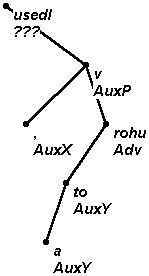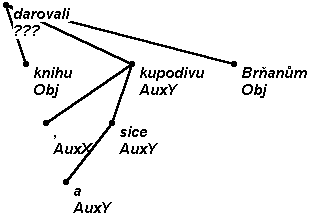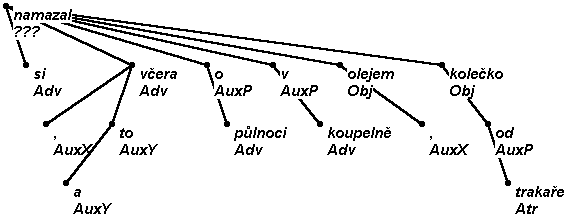Freely adjoined sentence parts are separated by commas and introduced by such particles as a (and), a sice, a to (and that (is)); these particles are discussed in part Particles introducing a loosely attached sentence member.
All freely adjoined sentence parts are assigned their usual function and are suspended in the usual way. Commas are suspended in a similar vein as brackets (i.e. the first, opening bracket under the governing node of the first member and the second, closing bracket under the governing node of the last member, see part Bracketing AuxG). The introductory particle (with afun AuxY) depends on the first member (directly, i.e. not on a preposition, see the examples); if the introductory particle consists of more than one word (a sice, a to), the first member is suspended under the second member.


